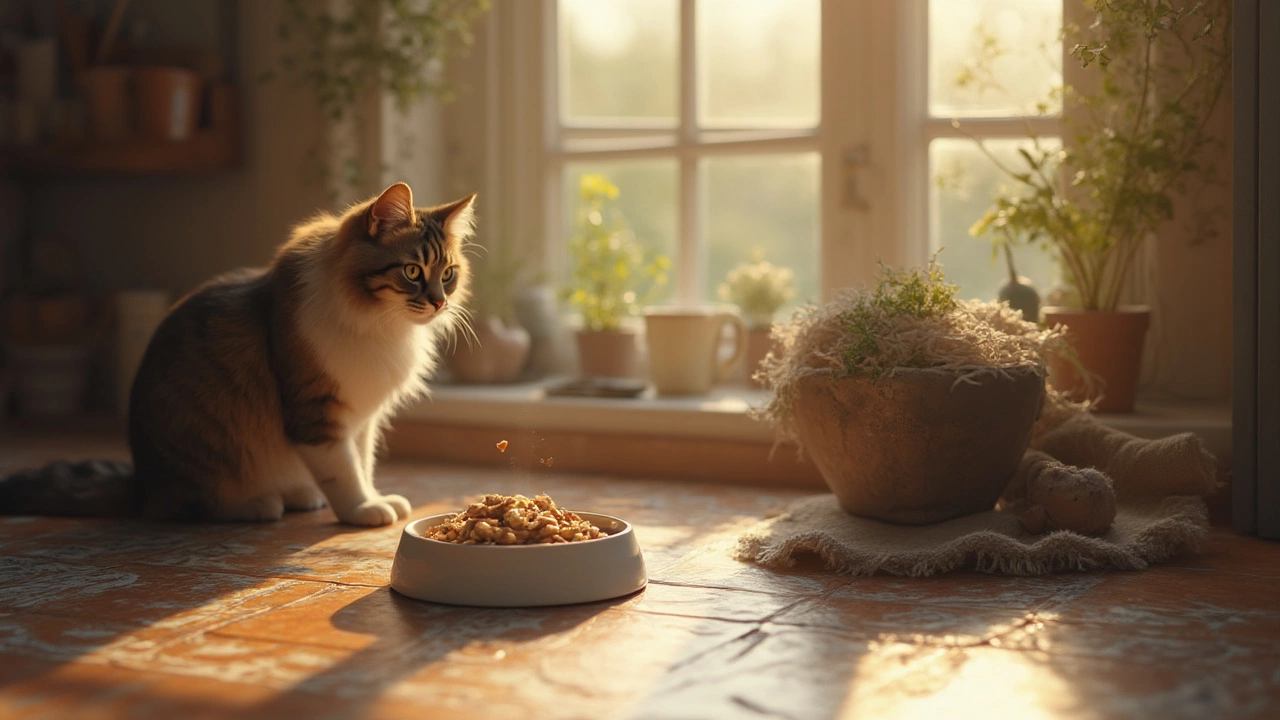Cat Feeding Schedule: Simple Tips for a Healthy, Happy Kitty
Ever wonder why your cat seems picky one minute and ravenous the next? The secret is often a solid feeding schedule. When you give your cat food at the same times each day, you help its metabolism, curb begging, and keep weight in check.
First thing’s first: decide how many meals your cat needs. Most adult cats do well on two meals a day – one in the morning and one in the evening. Kittens, on the other hand, need three to four smaller meals because their bodies burn energy faster.
How Much Should You Serve?
Check the label on your cat’s food for the recommended daily calorie amount. Then split that number by the meals you plan to give. For a 10‑pound cat, about 200‑250 calories per day is typical. If you’re feeding dry kibble, a half‑cup in the morning and another half‑cup at night usually does the trick. For wet food, one 3‑oz can in the morning and another at night works well, but always adjust for your cat’s activity level.
Watch your cat’s body condition. If it starts gaining a pound or two in a few weeks, trim the portions a bit. If it looks too skinny, add a few extra calories – a small spoonful of cooked chicken or a bit more kibble can help.
Dry Food All Day or Meal Times Only?
Leaving dry food out all day is called “free‑feeding.” It’s convenient, but it can lead to overeating, especially for indoor cats that don’t get much exercise. Experts recommend measured meals instead. When you serve dry kibble at set times, you know exactly how much your cat ate, and you can spot any sudden changes in appetite.
If you must leave kibble out because you’re away, choose a portion that matches half the daily allowance and keep the rest in a sealed container. That way your cat still gets a controlled amount while you’re gone.
Some cats love the texture mix of dry and wet food. A common trick is to top a small scoop of kibble with a spoonful of wet food. The wet part adds moisture, which is great for kidney health, and the dry part satisfies the craving for crunch.
Now, let’s talk ingredients. Not all kibble is created equal. Look for dry food that lists a real meat source as the first ingredient and avoids excessive fillers like corn or wheat. Those fillers can cause digestive upset and contribute to weight gain.
Watch out for harmful additives. Some low‑cost brands sneak in artificial colors or too many preservatives. If you see a long list of chemicals, it’s worth swapping to a higher‑quality option.
Finally, remember that water is a crucial part of any feeding schedule. Cats often don’t drink enough, so a water fountain can encourage them to sip more. Fresh water should be changed daily, especially if you’re feeding dry kibble.
Stick to a consistent schedule, measure portions, choose quality food, and keep fresh water nearby. Your cat will thank you with a silky coat, steady weight, and fewer midnight meows. Happy feeding!
Posted By Bryndle Redding On 28 Jul 2025 Comments (0)
How Often Should You Feed Your Cat? Best Daily Feeding Schedules Explained
Curious about how often your cat needs to eat? Learn the best daily feeding schedules, what affects meal frequency, and tips for a happy, healthy cat.
READ MORE